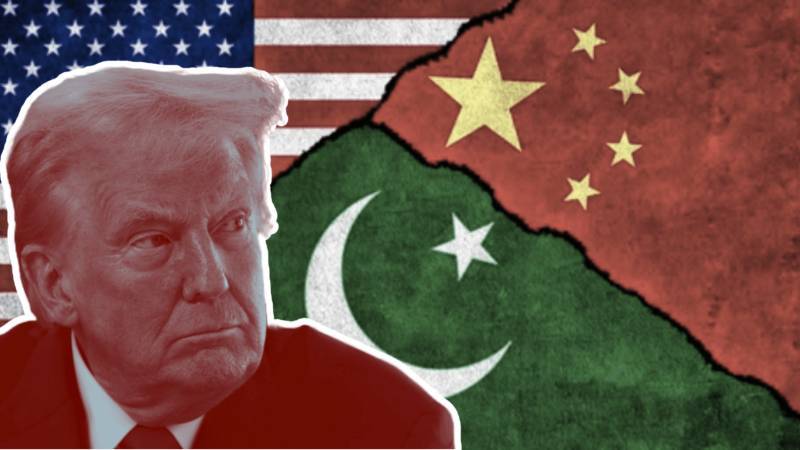
Our contemporary geopolitical landscape has been shaped by the interplay between emerging multipolarity and the crumbling dominance of Western-led systems. However, this has produced a complex dilemma for Asian nations, especially those lying in the Asia-Pacific region. In this regard, Pakistan could be the prime case in focus, as it navigates two major forces: the reelection of Donald Trump in the US and the expanding BRICS bloc. Therefore, as the world braces for a wild ride with Trump's return, Pakistan might catch itself at the heart of this evolving dynamic, seeking to navigate between US leadership under Trump 2.0 and the growing appeal of the expanded BRICS bloc under the increasing influence of China and Russia.
Further, scholars agree that Trump’s approach would not be much different from his first term. His “America First” mantra emphasised economic nationalism, decoupling from China, and restructuring the global trade patterns to serve US interests. While Trump’s previous administration’s approach towards the Indo-Pacific aligns much with that of Biden’s administration, the regional policy of the Trump 2.0 will be likely characterised by greater inconsistency, unpredictability, and tensions with US allies and partners. Hence, Asia-Pacific states may find themselves at the whirlpool and look for alternatives to seek defense and political autonomy from the United States.
On the other hand, the implications of Trump’s return to Asian countries could vary. As some states, like India, might benefit from increased defense and trade cooperation, other countries in the Asia Pacific – especially Pakistan – could more likely seek to reconcile their economic reliance on China amid Washington's hardline policies. Further, Trump’s unpredictability and impulsiveness might raise concerns for countries like Pakistan to reexamine their foreign policies.
Pakistan’s experience with Trump’s first tenure was not very welcoming. During his former tenure, Washington focused largely on concerns related to Pakistan’s alleged involvement in providing safe havens to militants and not cooperating with the US to deal with the Afghan Taliban
Meanwhile, the expansion of BRICS is making waves on the international stage. The recent announcement that Saudi Arabia, Egypt, Ethiopia, Iran, Argentina, and the United Arab Emirates (UAE) are set to become official members of BRICS, highlights the emergence of a multipolar world order and Global South. In the words of Trita Parsi, serving as the vice president of the Quincy Institute for Responsible Statecraft, she stated, “As the world shifts away from unipolarity, the US is also losing its ability to act as a gatekeeper”. This shows how strengthened BRICS, an alliance with the countries seeking to alleviate their dependence on the US, would shape the dynamics of global geopolitics, especially global South and Asia Pacific.
In this scenario, where BRICS' portrayal of Asian countries as an appealing option to hedge against the volatility of Western policies, Pakistan’s conundrum increases at large. Among other countries like Malaysia and Thailand, Pakistan has also expressed its interest in joining the bloc. In her recent statement, Mumtaz Zahra Baloch, spokesperson for Pakistan’s foreign ministry, expressed Pakistan’s interest in joining the BRICS, calling it an “important group of developing countries”. This shows Pakistan’s confused situation while designing its foreign policies concerning the US-China rivalry.
Moreover, Pakistan’s experience with Trump’s first tenure was not very welcoming. During his former tenure, Washington focused largely on concerns related to Pakistan’s alleged involvement in providing safe havens to militants and not cooperating with the US to deal with the Afghan Taliban. Further, its security assistance worth $1.3 billion was also stalled by the Trump administration amidst this claim. Hence, this new administration under Trump might have put Pakistan’s administration into the doldrums, putting their strategic interests with the US at risk.
These experiences of Pakistan with the Trump administration in the past would lead Pakistan to pursue and secure its national interests through other avenues. It sees BRICS as an appealing option to hedge against the volatility of Trump’s hardline policies. Also, this alliance includes China as a frontline state with whom Pakistan enjoys a good relationship – reflected in their China-Pakistan Economic Corridor (CPEC). However, to attain membership, Pakistan needs the consent of all members, including its archrival, India.
Moreover, Pakistan’s recent visit to Russia solidifies the claim of Pakistan’s interest in joining this bloc. However, the rise of BRICS and the global South is shaping the world into a multipolar world order. It means the countries in the Asia Pacific, especially India or Pakistan, that are strategically important would not step aside from either the Western bloc or the emerging non-Western bloc. As the Trump takeover of the US administration would be marked by unpredictability and chaos, BRICS would continue to prove its importance to developing states, leading developing states like Pakistan into a quandary of choosing a side.
Hence, to assume the future course of this situation, the interplay between Trump’s 2.0 and BRICS expansion might produce a transformative shift in foreign policies of Asia-Pacific, particularly Pakistan. Rather than aligning exclusively with one bloc, states might go with prioritising their sovereignty and security, favoring both Western and non-Western platforms to advance their interests. This strategy also creates a chance for this region to showcase its potential to shape its destiny in an increasingly multipolar world.
Conclusively, the triumph of this balancing act relies on the ability of countries in the Asia-Pacific, especially Pakistan, to maintain strategic flexibility. While, Trump’s America-first mantra, coupled with BRICS’ multipolar ambitions, will test the region’s resolve to navigate competing pressures without compromising its autonomy, their choices will not only redefine their role in global geopolitics but also influence the contours of a new world order— one that moves away from unipolarity and resonates the realities of a multipolar world.

